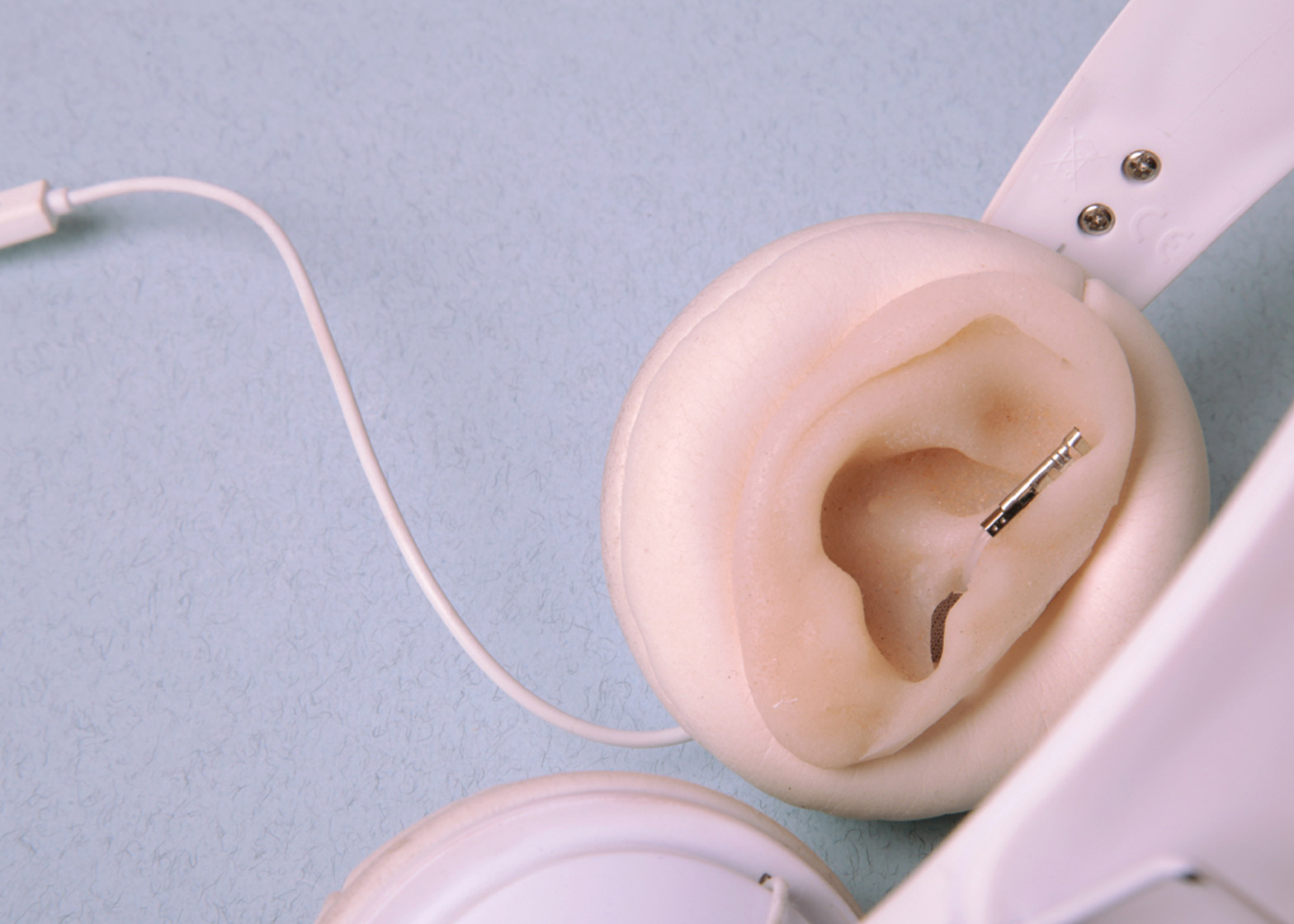Graduate shows 2016: this range of conceptual implants designed by Central Saint Martins graduate Lesley-Ann Daly allows wearers to track their health using sound.
The Anthropomorphic Sensory Augmentation collection features a cardiac monitor, nutrition tracker and toxicity evaluator, all of which are connected to an auditory mediator – an in-ear device worn like a pair of headphones.
The mediator would give the wearer "enhanced" hearing, allowing them to tune into the three implanted health trackers, from which they would receive different tones and sounds as feedback.
"By appropriating the intuitive qualities of sound, this communication method allows for a more visceral connection to the information and therefore the body," said Daly, who refers to the system of connected implants as "ultrasonic intra-body communication".
"This Body Area Network (BAN) enables you to be able to hear numerous devices implanted in your body that are tracking and communicating your physiological health data."
The cardiac monitor would be placed in the heart to measure rhythms and cardiac health, alerting the wearer to strain and reporting back on optimum rates for an effective workout.
The nutrition tracker could be implanted into the stomach, where it would track nutrition and assign contrasting sounds to different nutrients.
Toxicity would be measured by a liver implant, which would report back on high levels of enzymes associated with liver damage, providing associated warning sounds.
Daly developed the collection as an alternative to current wearable technology, which is surging in popularity as people seek to track their own health and fitness.
This has seen companies launch everything from "the world's first smart menstruation cup" to a concept for a wristband that would track personal carbon consumption.
"External health tracking technology has previously relied on infographics to be able to effectively communicate the accumulated data," Daly told Dezeen. "However, problems with data visualisation create a disconnection between the information and the user being able to understand, analyse and react to it."
To explore alternatives, Daly researched sensory substitution – where the brain takes information from one sense and transforms it into the perception of another sense. An example is people who are vision-impaired using their sense of touch to read braille.
"These devices are designed to be speculative advances on the current implanted health-tracking technology being researched today," the designer added. "They are intended to be design probes that question the current trend of augmenting our own bodies, and the use of technology to enhance our sensory perception of the world."
As health technology develops, these devices could be injected into the body rather than implanted via surgery, and Daly suggests the body's own thermal, kinetic or biochemical processes could be used to power each device.
Royal College of Art graduate Wan Tseng also approached wearables as part of this year's graduate shows, but instead chose to focus on erotic wellbeing with a set of sensation-focused sex toys.

